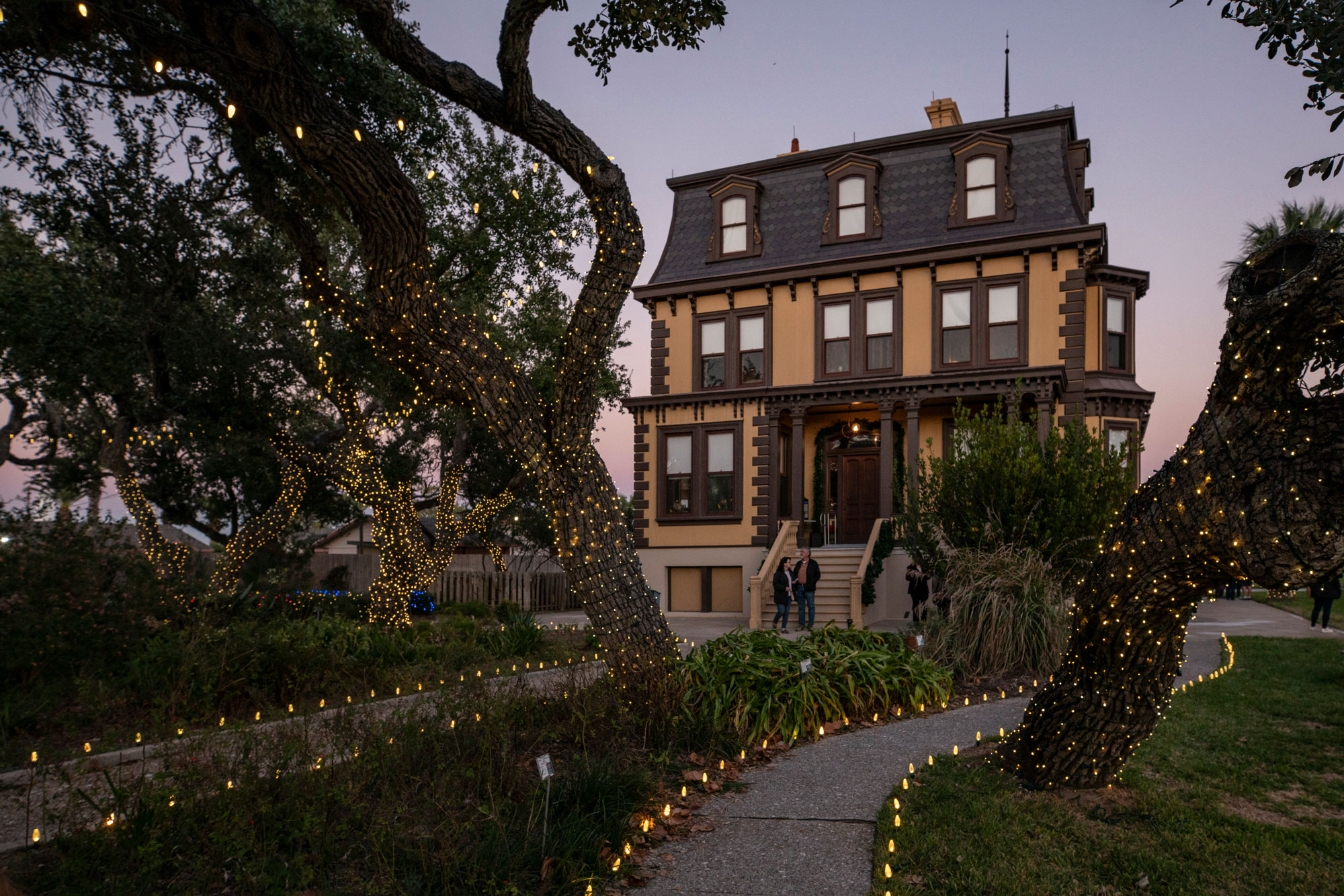Hurricane Harvey Hits
The Fulton Mansion State Historic Site, operated by the Texas Historical Commission (THC), is visited annually by more than 25,000 people. It is rated first on the list of things to see and do in Rockport-Fulton and is one of the most beloved State Historic Sites.
Unfortunately, on August 25th, 2017, Hurricane Harvey’s hit the Gulf Coast with Rockport-Fulton in the center of its path. Due to the devastating storm, the home suffered significant damage, including the destruction of the flat metal roof and chimney and major water damage to interior collections, floors, and window treatments.
Raising Support for the Restoration
We raised funds to repair the damages, and in the winter of 2018, we received a $30,000 grant from the National Endowment for the Humanities through its Chairman’s Emergency Grant Fund. This grant, the maximum amount for any single award through this program, was made to restore the damaged photo portraits, books, encyclopedia collections, and textile collections in the house. Additionally, Humanities Texas awarded a grant of $6,000 to support the collection’s restoration, and the San Antonio Conservation Society made a gift of $5,000 to assist with the storage of the collections once restored.
Thanks to the generous support of all the Fulton Mansion donors, this historic home is open to the public once again. For more information, visit the Fulton Mansion website.
About the Fulton Mansion Historic Site
The bayside mansion was completed in 1877 by George W. Fulton, who built a ranching and meat packing empire in the Coastal Bend. The significance of this French Second Empire house lies in its unique architectural style, construction methods, and advanced mechanical systems, including gas lighting, central heating, and indoor plumbing with hot and cold running water.
However, the Fulton Mansion is more than just a pretty Victorian house. Thousands of students participate in innovative programs each year that use the Mansion and Fulton family as a backdrop for teaching about early Texas and Aransas county history, the development of the Texas cattle industry, family life, history, economics, architecture, science, language arts, and social studies.
Donations in Action
When the site was first transferred to the THC in 2008, $1.9 million in state bond funds were allocated to stabilize and restore the structure; however, restoration cost $3.4 million. Watch our short film to get a glimpse of the restoration done after THC acquired the site.
